In honoring the Irish immigrant experience, the Yeaton-Welch House will explore the themes of immigration, resilience, and community.
The Yeaton-Welch House, originally called the Yeaton-Walsh House by Strawbery Banke, was constructed between 1794 and 1803 by Thales G. Yeaton. He likely built it as a rental property to meet the growing demand for housing from local craftsmen, seamen, laborers, and others working in the neighborhood.
For many years, this building served behind the scenes, functioning as storage for the Museum’s archaeological collections. Today, the Museum is restoring the interior of the house and preparing a new interpretation focused on the Welch family, Irish immigrants who lived here from around 1855 to 1909.
The exhibition will follow their experience as they built a life in Portsmouth, tracing their journey from newly arrived immigrants to established homeowners. Through their story, visitors will explore themes of perseverance, community, and the shared experience of neighbors from different backgrounds forging new lives in 19th- and early-20th-century America.
Photo by Joseph Goldberg, 1966; Courtesy of the Portsmouth Athenaeum
Yeaton-Welch House. David J. Murray/ClearEyePhoto.com
Although Irish immigrants made up 14% of Portsmouth’s population by 1910, their story has been missing from the Museum’s historical interpretation. Incorporating their history will complement and connect existing narratives of Puddle Dock as a neighborhood of newcomers, weaving together a fuller picture of Portsmouth’s immigrant past.
Michael and Mary Welch emigrated from Ireland in the 1840s during the Potato Famine. After settling in Portsmouth, they raised five children in the house at 4 Mast Street, with Michael supporting the household as a sawyer and occasionally working at the Portsmouth Navy Yard. Following Mary’s death in the early 1860s, Michael married fellow Irish immigrant Bridget Sullivan, and together they had four children. Twin daughters Joanna and Katey died of cholera infantum just one day apart, a reminder of the challenges families faced during this era. Despite hardships, the Welches persevered, ultimately purchasing the property and firmly establishing themselves in the community.
The exhibition will explore themes of becoming American through domestic life, public health and sanitation in an urban setting, and the economic realities facing immigrant families—including the important role of the U.S. Navy as an employer. The first-floor exhibit will recreate the family kitchen across two key moments: one side representing the 1860s and the other the early 1900s. This side-by-side interpretation will allow visitors to witness change over time, from the crowded living conditions and shared furnishings of the family’s early years to the greater stability they achieved as homeowners. Objects featured throughout the kitchens will be informed by the more than 57,000 artifacts uncovered during the site’s archaeological excavation.
The Yeaton-Welch House is the final historic structure at Strawbery Banke to undergo initial restoration. Though modest in scale, the Federal-period duplex features notable architectural elements, including decorative cornices, original doors, and a scrolled stairway, with pilasters and a pediment accenting the exterior. Between 2013 and 2023, the Museum completed an extensive exterior restoration. The next phase will focus on the first-floor interior, restoring walls, flooring, doors, and trim to the period of interpretation. The second floor will be adapted for essential institutional use, including offices and a restroom.
The Museum anticipates opening the Yeaton-Welch House exhibition to the public in 2028, the 70th anniversary of the Museum’s founding in 1958.
Funding for the Yeaton-Welch House restoration was provided in part by private donations to the Building Community: the Campaign for Strawbery Banke.
The Strawbery Banke Fund (Annual Fund) allows the Museum to continue to spearhead preservation work, retain its professional and knowledgeable staff, and provide innovative educational programs. Click here or use the button below to make a gift.





